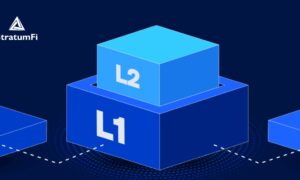In 2025, enterprises are waking up to a hard truth: horizontal AI, designed to work across every use case, is rarely delivering on its promise. According to McKinsey & Company, only 1 percent of companies use AI at a truly mature scale where it drives measurable business outcomes.
Global AI adoption may have reached 73 percent by 2025, but the majority of initiatives have stalled. Many organizations are realizing that general-purpose AI models, no matter how powerful, can’t understand industry nuances, buyer intent, or workflow complexity. These models are “jack of all trades, master of none,” and it’s costing enterprises billions.
The evidence is clear: 42 percent of enterprise AI projects were discontinued in 2024 up from just 17 percent the year before according to Contrary Research. Horizontal AI might generate insights, but it rarely transforms operations or revenue.
The Rise of Vertical AI: Industry-Specific Intelligence as the Next Competitive Edge
Enter vertical AI, purpose-built systems trained on domain-specific data and workflows. Defined by AIMultiple Research as “AI designed to solve problems within a particular industry or domain,” vertical AI delivers accuracy, relevance, and speed that generic systems can’t match.
Industry investors are taking note. NEA’s analysis describes vertical AI as “tomorrow’s titans of software,” emphasizing how tailored expertise drives defensibility and ROI. Unlike horizontal systems, vertical AI models understand how industries work from financial compliance to medical diagnostics to retail buyer psychology.
By embedding contextual knowledge, these models can not only generate content but make predictions, guide workflows, and trigger real-time business decisions. For enterprises, this means less experimentation and more performance.
How Onfire Is Redefining the Future of AI for Business Growth
At the forefront of this transformation is Onfire, a pioneer in domain-specific AI designed to bridge the gap between generic models and business reality. Onfire trains its models on buyer behavior, market signals, and industry data enabling decision-making systems that think in the language of the business, not just the syntax of AI.
Instead of retrofitting a general LLM into every department, Onfire’s vertical AI architecture builds context into the core model. The result is actionable intelligence, not generic output. This shift helps organizations escape the “pilot project” trap and move directly to scaled, high-ROI applications.
In industries where timing, regulation, and personalization define competitive advantage, Onfire’s vertical models bring precision that horizontal systems simply can’t deliver.
The Data Backs It Up: Why Vertical AI Is the Smart Money in 2025
Enterprise investment in generative AI skyrocketed to $13.8 billion in 2024, up from $2.3 billion in 2023, according to Menlo Ventures. Yet despite the spending, fewer than 10 percent of projects reached operational maturity. The problem isn’t lack of technology it’s lack of fit.
As Workato’s “AI Integration Crisis” report points out, “The first wave of generative AI was dominated by horizontal use cases like copilots and chatbots. They were easy to deploy but delivered diffuse, inconsistent benefits.”
Vertical AI flips this dynamic. It builds from the ground up integrating industry data, business rules, and buyer psychology to deliver ROI that CFOs can actually quantify.
For Enterprise Leaders, the Message Is Clear: Context Wins
For CIOs, CMOs, and Chief Data Officers, the takeaway is simple: generic AI creates generic results. The enterprises gaining traction are those aligning AI investments with specific business goals sales enablement, supply chain optimization, customer retention and choosing vertical AI partners who understand those realities.
As the AI landscape matures, horizontal platforms will still have their place for productivity and infrastructure. But when it comes to strategic, outcome-driven innovation, vertical AI is where the true value lies.
Onfire Is Lighting the Path Toward Intelligent, Industry-Specific AI
The shift from horizontal to vertical AI represents more than a technological evolution it’s a redefinition of how enterprises compete. As companies demand measurable impact, vertical AI has become the bridge between data and business growth.
Onfire stands at that crossroads, enabling enterprises to transform data into decisions and insight into ROI. For organizations tired of one-size-fits-all AI, the message is clear: the future is vertical, and it’s already here.



































